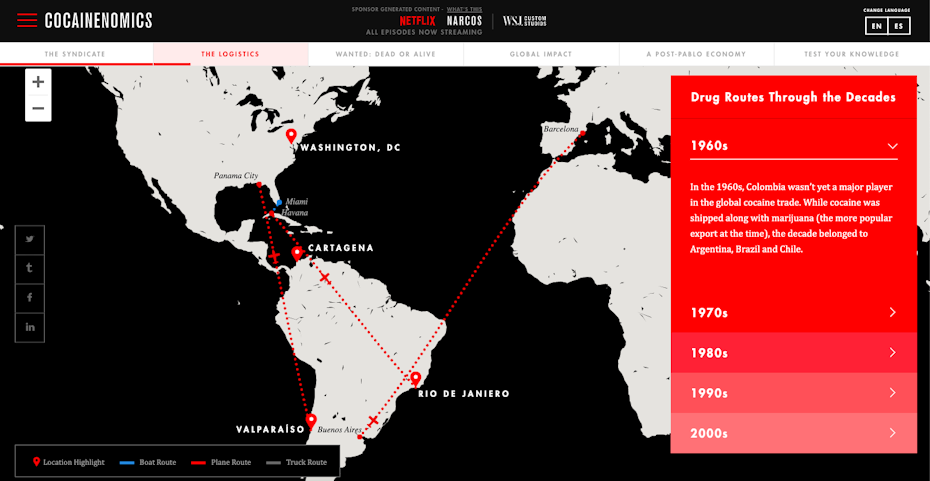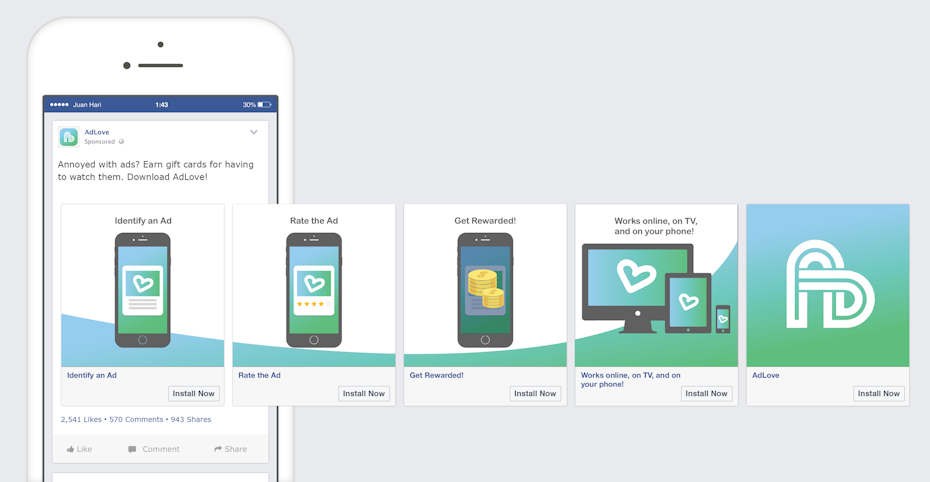It’s hard to believe that the early internet excluded commerce. Nowadays, the internet is the backbone of industry, making it easier than ever to set up shop and to turn your passions into an income. But getting started is only half the battle. To keep that shop up and running, you’ll need some kind of digital advertising.

The good news is that, with no printing costs, digital ads tend to run cheaper than print ads. They are also more immediate: instead of persuading a consumer to travel to a brick-and-mortar store, digital ads can take them directly to a web page to make the purchase then and there.
Despite these conveniences, digital advertising is no quick win for businesses. Every brand is vying for attention on the internet, competing with not only other ads, but also entertainment content as well. There are also an overwhelming number of channels for distributing your ad (each with particular audiences) and many forms your ad can take.
All of this can make online advertising daunting for newcomers. That’s why we’ve put together this beginner’s guide to digital advertising, outlining the basics of success in this arena. We’ll cover what digital advertising is, the different types of ads, and the 4 steps in the digital advertising process, with hands-on advice throughout.
What is digital advertising?
—
Digital advertising is the distribution of promotional content through online channels. In simpler terms, it’s advertising for the internet.
Though often included as part of a brand’s overall digital marketing strategy, online advertising is its own separate practice. It generally involves purchasing advertising space for campaigns, whereas marketing often prioritizes organic growth through existing channels like email newsletters, blog content, social media campaigns, search engine marketing, and others—although you can weave digital ads into these as well.

Digital advertising is a broad category with new types of “ads” cropping up everyday. They appear in any number of forms (banner ads, digital flyers, videos or animations) and on any number of channels (from social media to specific websites to search engine results).
As much ground as there is to cover, this article will provide a general overview for the basics of digital advertising and how it functions as a whole.
Online advertising vs. traditional advertising

Traditional advertising involves offline means of paid promotional campaigns, including magazine ads, billboard ads, posters, TV spots and direct mail, among others.
Although the practice is as old as civilization, advertising as an industry emerged for the first time around the mid-nineteenth century. The standard format was born through the combination of slogans with imagery, and newspapers solidified the practice by selling advertising space to lower their costs. Since then, traditional advertising has laid the foundations of sponsorship revenue, buyer psychology and the agency system.
Digital advertising, on the other hand, is a newcomer to the practice. While it shares many of the core tenets of print advertising and might even look similar, the landscape of the internet is fundamentally different. Digital ads can be interactive, for starters, and most include clickable buttons as CTAs (or calls to action) that direct users to landing pages where they can learn more about a product or even complete a purchase.
Digital ads can also target more specific segments of a brand’s audience, especially when tailored towards user shopping/browsing behavior. Moreover, they offer much more robust and immediate analytics, such as views and bounce rate. Though most businesses use a combination of traditional and online advertising, a strong digital advertising strategy is essential these days for success.
For a deep dive into the differences between digital marketing and traditional marketing check out this article.
Inform, persuade, remind: the goals of digital advertising
The goals of your online advertising strategy will vary from campaign to campaign, and are likely a component of your business’s overall yearly or quarterly goals. All the same, traditional advertising practice outlines a combination of three general objectives: inform, persuade and remind.


 .
.- Inform: establish brand or product awareness
- Persuade: increase revenue through customer conversion
- Remind: keep a brand in the forefront of a consumer’s mind
While ads do cost money, direct sales are not always the primary goal of an ad. There are many routes to increasing revenue, some of which are expressly indirect. For example, an ad could persuade the viewer to click a CTA button and purchase, or it could inform them of a product so they remember the brand when they purchase in the future. On top of that, not all conversions are worth the same amount—some converted customers may become repeat buyers whereas others may only buy once.
Ultimately, what all this means is that a brand might not reap the full benefits of a digital ad until much later, which can make it difficult to measure how successfully an ad campaign met its goals. Metrics like sales conversion can help you measure persuasion, but other metrics like views, impressions or click-through rate can give you insight into whether or not your ad is resonating—which is to say, are people paying attention to your brand and will they remember it?
The types of online advertising
—
Although there are many different types (and subtypes) of online ads, we can divide them into two main categories.
Display ads
Display ads are the most recognizable type of digital ad: they typically consist of imagery, ad copy and a CTA in some configuration. They bear the closest resemblance to traditional advertising—the digital evolution of billboard ads or flyers. The most common types of display ads are:

- Banner ads: Square or rectangular image-based ads displayed above or to the side of web content
- Popup ads: Ads that interrupt browsing by overlaying the image onto the screen and require the viewer to manually close them
- Interstitial ads: Ads that show up during a loading screen and require the viewer to wait a few seconds before clicking out of them
- Rich media ads: Ads with interactive elements (besides CTA buttons) such as text fields, swipe/scroll functionality, multiple choice or 360° rotatable images
- Video ads: Standard video commercials, as on television—only digital video platforms allow viewers to skip some ads after a few seconds
Display ads have become a staple of web browsing, although their blunt style of advertising tends to make users react negatively to them, if not actively avoid them. But when they are persuasive, well-executed and put in front of the right people, they often generate more immediate sales.
Native ads
Native ads are advertisements that are designed to be integrated seamlessly into a digital feed. They are meant to look like they belong, hence the term native. These ads pay attention to their target audience and seek to mimic the kind of content that the viewer consumes or is looking for. Because of this, the way native ads can look varies depending on the audience and the platform. The following are the most common types of native ads:

- Social media ads: Businesses pay for their social media posts to rank higher in the platform’s algorithm and appear in the feeds of non-followers who have similar shopping or browsing habits.
- Paid search ads: Businesses pay to have their web pages rank at the top of a general search engine results page for selected keywords or phrases.
- Promoted listings: Businesses pay to have their products listed at the top of a search results page on a shopping website or app.
- Recommended listings: Businesses pay to have their products or content featured in related/recommended sections on shopping or content sites (“Sponsored products related to this item” on Amazon).
- Influencer partnerships: Businesses partner with social media stars with high follower counts in their target demographic and create branded content for that influencer’s feed.
- Sponsored content: Businesses sponsor podcasts, video channels or specific pieces of content. The ad might involve the content creator reading long ad copy or simply letting the audience know that the content is “presented by” said brand.
- Product placement: Businesses pay to have their products featured without direct advertisement in videos or video games.
Native ads can go over well with audiences because they are less disruptive than display ads (though by law they are still labelled as ads or sponsored content). But that subtlety can also result in less immediate conversion.
Digital advertising in 4 steps
—
Now that we know what digital advertising is, how it works and the different options available, let’s dive into the digital advertising process from start to finish.
1. Strategy
For your online ads to succeed, you must begin with a campaign concept backed by research. Start by articulating the problem you are trying to solve, and then connect this to the audience you are trying to reach.

For example, is a landing page not receiving enough traffic? Tools like Google Analytics uncover demographic information about who is visiting these pages, which give you a target for growth. Have your past adverts gone unnoticed? Keyword research and search tools like Google Trends show you which topics people are interested in and the questions they have—questions your campaign can answer. Are you having a hard time standing out from the pack? Analyzing your competitor’s current advertising strategy gives you an idea of what works for them, and customer reviews of their products tells you what aspects of their service are lacking.
As far as the actual concept of the ad, take your research and add imagination. Your digital ad should tell a story: most viewers distrust ads and consciously avoid them when possible, so ads that feel more like entertainment or tell genuine stories perform better. Usually this involves identifying your customers’ pain points and demonstrating how your business solves them.

With your campaign strategy ready, the next step is to set up a formal brief to document your plan and everything you need to implement it. You want to account for the following:
- Campaign title and description
- Goals and success metrics
- Target audience
- Distribution channels
- Content materials
- Budget
Whether or not a brief is required by higher-ups before approving a campaign, it is always good practice to draft one so that all parties involved are on the same page.
2. Budgeting
Next, you take all of your grand ideas from the strategy phase and make decisions about how to make them real. Budgeting and allocating funds is no exact science. It depends on your own revenue goals and the marketplaces you are vying for. Pay particular attention to these three main concerns:

- People. The medium determines who needs to be involved in the campaign. If it is a video ad, you may need to budget for a video production team. If it is a design-based ad, you will need to budget for a copywriter, graphic designer and a developer. In addition to any contractors or freelancers, make a list of in-house talent needed.
- Distribution. Where your ads are distributed. Keep in mind that each platform has different pricing models. Social media advertising operates on an auction-like bidding system for advertising space. Some ad channels, typically paid search, use a pay-per-click (PPC) model that charges you based on the number of click-throughs. The length of time that each ad is displayed also increases your ad spend. Review the pricing for each of your distribution options to account for this ahead of time.
- Schedule. Scheduling describes the scope of your campaign, both in planning and execution. Account for timetables and salaries of people involved in the creation of the ad, as well as the timeline for how long the ad stays live on your selected platforms.
Keep all your budgeting notes handy until the campaign finishes: they can play a role in reviewing your campaign’s performance afterwards. Success depends on how your ad spend compares to your return on investment (ROI), which is to say, whether you received more for your ad than you put in.
3. Production

With your strategy, budget and schedule in place, you should have a sturdy framework to guide you through production. Earlier you made an overall campaign document, but now you need additional, more specific briefs for each aspect of your ad campaign, delivered to the responsible parties.
For example, a copywriter needs a brief that outlines word count, targeted keywords, messaging goals, etc. Meanwhile, a designer needs a creative brief specifying the size of the canvas, advertising color stipulations, target audience, design references and so on.
There are lot of options for hiring contractors, but when it comes to finding graphic designers a creative platform like 99designs is great for finding talent quickly and easily. The platform gives you access to a global pool of professional designers and creatives, so you can find the right fit for your needs and budget more easily. Not to mention the advantages of having a secure project space for flexible invoicing, communication and secure payments.
Once you’ve connected with the talent and delegated the appropriate assignments, work with creatives to keep projects on schedule. Offer regular feedback to ensure that the campaign is coming together the way you imagined. We recommend testing the advertisement on a sample of viewers so that you have time to incorporate their feedback before it’s too late. If necessary, be sure to consult and adjust your schedule regularly as issues arise.
4. Distribution
Now that you’ve done everything you can possibly do to prepare for and produce your ad, it’s finally time to unleash it into the digital sphere. Each channel has a different process for distributing the ad, but it should be as simple as following the platform’s instructions and uploading your content.

As we mentioned, it is good to test your ad before you distribute it, but even this does not guarantee that viewers respond the way you expect. When your ad goes live and presented to the whole of the internet, new problems may arise. The great thing about digital advertising, though, is that you can check results quickly and implement changes mid-campaign.
Most platforms have their own analytic tools with standard metrics like the number of impressions, clicks and percentage viewed (for videos). UTM codes can also show you which portion of your website traffic correlates to different ads. With A/B tests, you can compare two different versions of your ad on two segments of your market to reveal which performs best. Because digital ads are always live, you can adjust any of the content whenever you need to.
Dial up your online advertising
—
Although digital advertising is meant to complement your general organic marketing efforts, it alone can boost sales, promote brand awareness and connect with your audience in a much faster way. That’s assuming you have solid advertising content to back it up.
While the numerous approaches to digital advertising might seem daunting, we hope this beginner’s guide has given you a solid foundation to start on. And if you’re ready to take your digital advertising to the next level, a professional designer is essential to make your ads come alive online.
The post Digital advertising 101: beginner’s guide to advertising online appeared first on 99designs.
No comments:
Post a Comment